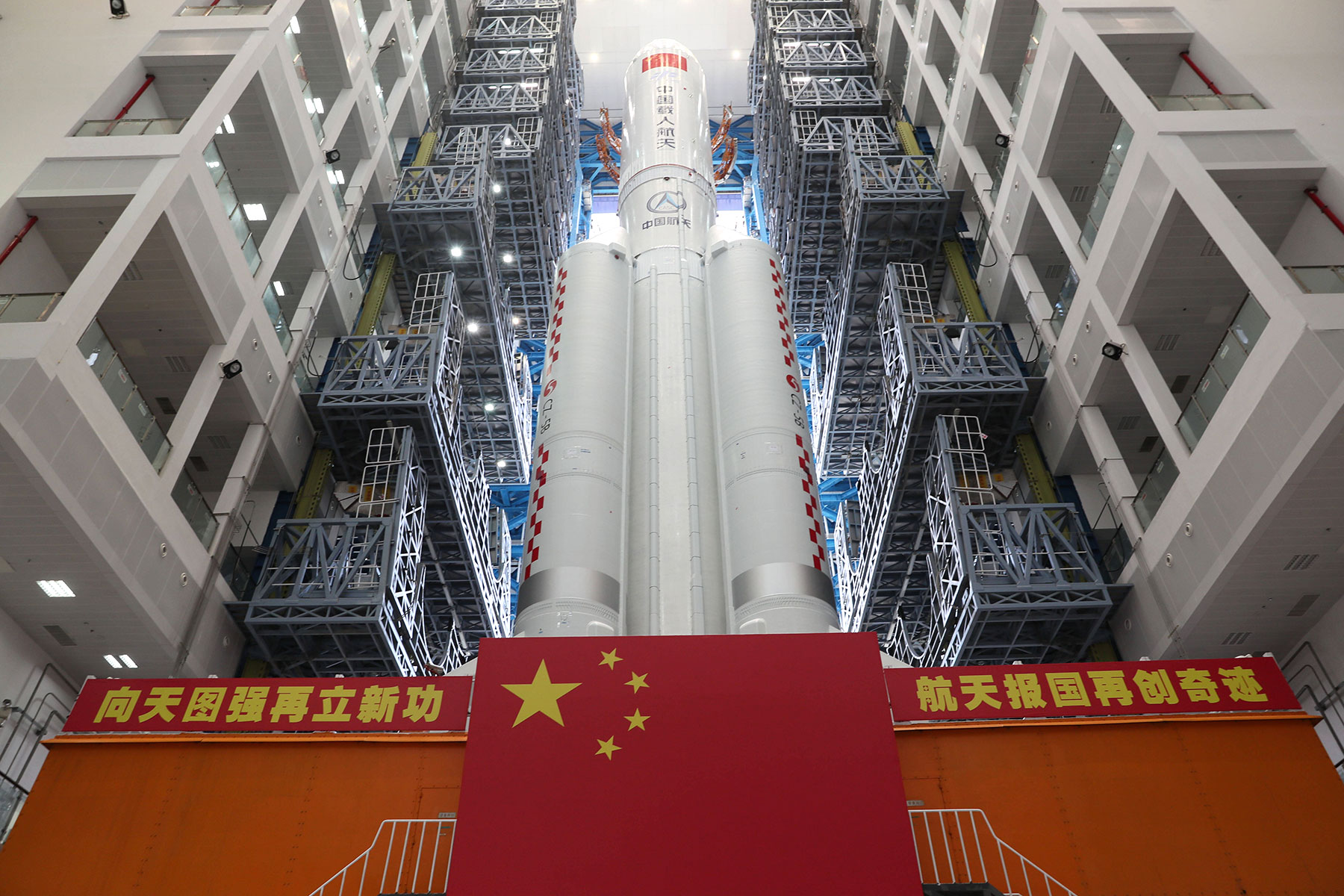China has entered the space race. With the successful launch of the Tianhe Module, the Chinese Tiangong Space Station is well on its way. NASA’s China exclusion policy has also been given credit for China’s push towards space.
Scarlett Yan
27 May 2021
Arabic version | Chinese version | Spanish version
On 29 April China successfully launched the Tianhe module, the key module of China’s space station. The move marked the first step to establish China’s Tiangong space station, created and independently launched by China. How is China’s ambitious space program to be understood? Why does China want to build its own space station? And what implications does this have for global space programs?
What is Tianhe?
The Tianhe Module is the core cabin of China’s future space station, the Tiangong Space Station, and it serves as the management and control center. The cabin, which could accommodate three astronauts, has a total length of 16.6 meters, a maximum diameter of 4.2 meters and a takeoff mass of 22.5 tonnes.
As the most important step of the mission, the launch of Tianhe kicked off the construction work in orbit of the Tiangong Space Station. The other key components of Tiangong Space Station include the Mengtian Laboratory and Wentian Laboratory. They will be launched into space in the coming year with about 10 launches. It is estimated that in 2022, Space Station Tiangong will be in orbit and fully operational. The expected lifespan for Tianhe is 10 years, and it is expected to extend to 15 years.
In a congratulatory letter China’s President Xi Jinping stated: “I hope you will vigorously carry forward the spirit of ‘Two Bombs and One Satellite’ and the spirit of manned spaceflight, be self-dependent and innovative to win the victory of space station construction, and contribute to the construction of a modern socialist country.” The Spirit of Two Bombs and One Satellite was the name given by Chairman Mao to China’s nuclear, missile and space project in the 1950s.
In 1992 China established the “3 step strategy” of space science technology. The first step involves sending astronauts into space in a China’s own spacecraft with their safe return; the second step, mastery of certain technologies for space station construction, including extra-vehicular activity, orbital docking, and in-orbit propellant refueling; The third and final step is to build a large permanent space station, and to operate it successfully, with the successful launch of Tianhe being the key to this step.
National prestige
In the space game, China is a latecomer. For a long time, the Soviet Union and the U.S. have dominated space, and the space race between the two big powers used to be an important aspect of the Cold War. After the Cold War, many countries became involved in the exploration and use of space. International cooperation is the most significant way to work in space. Right now, the only space station in orbit is the International Space Station (ISS), a multinational collaborative project with several participating countries including Russia, US, Europe, Canada and Japan.
Why does China want to build its own space station, rather than cooperating on the ISS project? One key reason is that China is banned from participating in the ISS. Although many astronauts from other countries have entered the ISS, Chinese astronauts never got the chance. This could be traced back to a bill passed by the U.S. Congress in 2011. The 2011 Department of Defense and Full-Year Continuing Appropriations Act officially forbids NASA to cooperate with China in any way (China Exclusion Policy of NASA).
“We should thank the US for blocking us in space technology” is one of the most popular comments in Chinese social media. This also more or less reflects the mood within China. In this regard, China’s development and construction of its own space station became a mission of patriotism and a demonstration of national prestige, Jinjiang Zhang, the deputy chief engineer of Tianhe module, commented that building the space station is part of the “Chinese Dream” for thousands of millions of Chinese. “Space exploration is a demonstration of a country’s comprehensive national power. It is significant for raising our international prestige and increasing our people’s cohesion.”
A new space race?
China’s performance has also raised some concern about whether a new space race is starting. The future of the ISS is still pending, as its funding is due to run out in 2024, and Russia has stated their readiness to withdraw from this project in 2025. This may indicate that, for a period, China’s Tiangong Space Station may be the only space station operational in space.
While China has stated its willingness to cooperate with the international community in space science, it is uncertain whether the major powers would collaborate with China in the space game. These powers view China’s increasing strength in space and militarily as a prime example of the the Thucydides Trap, defined by the US political scientist Graham Allison, who first used this concept, as the tendency towards war when an emerging power is seen as a threat to replace an existing great power as a regional or international hegemon. Would the US accept China’s “peaceful rise”, although the potential conflict this time will not be on earth but on a new frontier – space.





